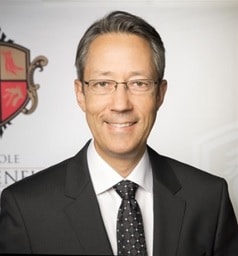ISO 4892-2 and ISO 4892-3 tests now offered at Micom Laboratories
Micom Laboratories is delighted to announce that it now offers ISO 4892-2 and ISO 4892-3 test as part of its offering for coating testing and UV testing services. These two standards differ by the illuminating source used to do the accelerated aging of the samples. Indeed, ISO 4892-2 uses Xenon-arc lamps as a light source and it is thus based on the ASTM G155 standard. Whereas, ISO 4892-3 employs UV fluorescent lamps as an illuminated source and it is therefore based on the ASTM G154 standard. Furthermore, these two methods evaluate two different aspects of polymers. ISO 4892-2 primarily assesses the aesthetics while ISO 4892-3 mainly focus on evaluating the loss of mechanical proprieties.
ISO 4892-2 and ISO 4892-3 tests
ISO 4892-2 and ISO 4892-3 simulate actual field conditions, on an accelerated basis, your product may be confronted to. By doing so, it is possible to foresee the overall performance of the material over time. On one hand, ISO 4892-2 essentially focuses on the aesthetics, because its light source is a more suitable representation of the solar spectral distribution and especially of the region that is responsible for the color fading.
Moreover, by changing the filter combination, it is possible to replicate the characteristics of a light that is behind a window or of a direct sunlight exposure. Hence, by combining the appropriate filter and the right conditions, ISO 4892-2 corresponds to the better time predictor of the two methods, because it is the best emulation of the product’s environmental conditions.
On the other hand, ISO 4892-3 mostly characterize the loss of mechanical proprieties, because its illuminating source emits in the UV spectrum that is responsible for the loss of mechanical resistance for polymers. Furthermore, by employing a suitable filter combination, it is possible to reproduce the characteristics of a light that is behind a window or a direct sunlight exposure at low wavelengths.
Consequently, under the right conditions and with the appropriate filter, ISO 4892-3 corresponds to a method which is good to assess the evolution of the mechanical properties of the polymer, nevertheless it remains that this method is a poor time predictor since its spectral spectrum is narrow, it can only approximate the solar spectrum at low wavelengths and thus it cannot account for phenomena that are outside its spectrum of emission. More precisely, its spectrum accounts for the UV to the beginning of the visible spectrum. It is recommended for both test methods to have a control of known performance tested concurrently with the samples in order to have a good comparative basis.
Micom offers polymer testing services for a wide selection of material and products. For more information about the ISO 4892-2 and ISO 4892-3 tests, we invite you to contact our material testing laboratory today. It will be our pleasure to answer your questions about either of those tests.
Micom Laboratories is a third party industrial material testing laboratory accredited by the Standards Council of Canada, CGSB, ISTA and many other organizations.
Disclaimer
All of the information and opinions contained in this blog are made with the information, and the understanding that we have reviewed at the time of publishing. However, despite our efforts, we do not offer any guarantee of their accuracy, thoroughness of our investigation or validity. The author of this blog is not liable for any inaccuracies or any losses or damages that may result from the use of the information or data contained herein. This blog has not been reviewed or verified for its accuracy by any peer group associates prior to publication.


